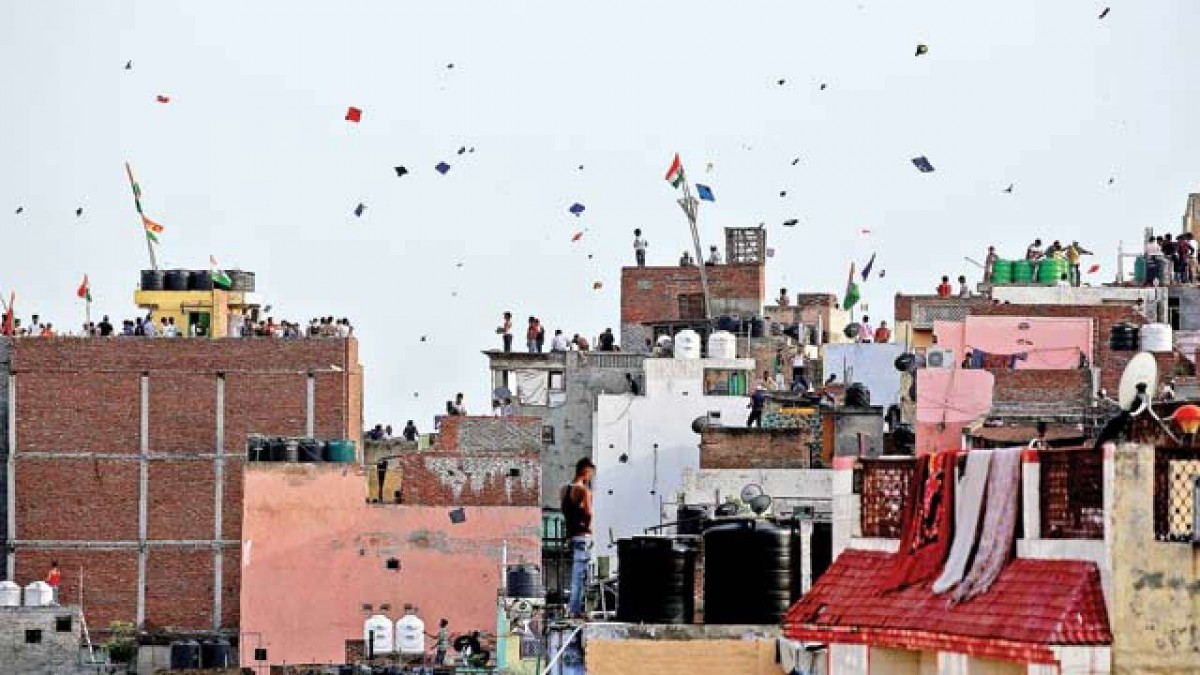
The walled city of Shahjahanabad – now Old Delhi – is spread over 600 hectares in the heart of the national capital, and still waits for its first girls’ senior secondary school offering science as an option in secondary education.
“Even after 72 years of Independence, the secondary education system for girls in Old Delhi is significantly underdeveloped,” says Khaleel Ahmed, a senior management figure at Old Delhi’s 300-year-old Anglo Arabic Senior Secondary School.
In 1997, during a recruitment exercise for female teachers, Ahmed was unable to find a single candidate with a science background from a pool of 40 applicants. After further investigation, he unearthed a distinct pattern among girls who had completed senior secondary education from the schools of Delhi-6: an overwhelming majority had opted for arts after matriculation.
‘Not of their own volition, but simply due to lack of access to science as a discipline,”Ahmed said. Twenty-two years and six legislative assemblies later, the walled city still waits.
In early 2012, the Anglo Arabic Boys Higher Secondary School of Ajmeri Gate, founded as a madarsa in 1696 by Ghaziuddin Khan, Aurangzeb’s general, changed its three-and-a-half-centuries-old tradition by going co-ed. The move, which faced severe backlash from Islamic hardliners living in the area, was carried out solely to provide girls the opportunity to choose science as a stream after matriculation, says Anas Faizi, who lives in Ballimaran and works at All India Radio.
“There are a handful of government-aided schools, but compared to the population, they are not enough by any stretch of the imagination,” Ahmed added. In Shahjahanabad, the Anglo Arabic, the S.S.K. Khalsa and the 114-year-old Indraprastha Hindu Senior Secondary (aided schools) are the only government-affiliated schools with science as an option in secondary education for girls. And Shahjahanabad has a population of over 300,000 and a population density an order of magnitude greater than that in Gaza.
Every year, these aided schools receive 95% of their teachers’ salaries’ worth grant-in-aid from the government. This in turn leaves the schools’ private management to pay for electricity, water, maintenance and repairs, and the remaining 5% of the teachers’ salaries.
“Despite the management spending nearly 60 lakh a year, we have to follow the same rules as government-run schools, even while recruiting teachers,” according to Ahmed. To fill vacancies in government and government-aided schools, Delhi’s directorate of education (DoE) issues advertisements inviting eligible candidates.
The management at the severely understaffed Anglo Arabic school, with over 30 unfilled teaching positions and a student-to-teacher ratio of 90-1, have been waiting for new teachers and a DoE advertisement for more than a decade. The dingy hallways of the Mazhar-ul-Islam school of Bada-Hindu-Rao, which has 13 unfilled teaching positions, last saw new teachers in 1996.
“There’s an unquestionable need for new schools but we also need to take a hard look at the sorry state of the existing ones. A majority of the aided schools have been dealing with an acute shortage of teachers for decades, in what is a clear case of neglect,” Farid Warsi, a government teacher who has been teaching in Shahjahanabad’s schools for the past 26 years, said.
In 2015, the Delhi government selected 54 government schools to be developed into ‘model’ schools based on proposals submitted by their principals. All of them are are located outside Shahjahanabad. ”I wonder how bad our proposals must have been, to not merit a single penny out of the 250 crore allocated for model schools,” Abu Sufiyan, a 29-year-old resident of Sui-Walan, Darya Ganj, complained.
In their 2015 election manifesto, the Aam Aadmi Party had promised to “build 500 new schools with a special focus on secondary and senior secondary schools”. But according to locals, the city’s cramped streets have not seen a new senior secondary school in over four decades.
All previous governments and the present one have unabashedly cited a lack of land and space as the primary reason for the abysmal condition of schools in the area. ”Refurbishment of old schools does not require new land. One simply has to replace the existing old with new,” Faizi said.
“When it came to the Metro, they carved Old Delhi open like a peach and constructed on the pit for years. Governments can find and create spaces whenever and wherever they see fit,” Sikandar Mirza Changezi, a 64-year-old, fifth-generation resident of Pahari Imli, Shahjahanabad, said.
The girls of Shahjahanabad are, inadvertently, caught in a cycle of neglect that starts with them graduating college in arts due to an absence of schools offering science, and ends with perpetually waiting to be employed as teachers in schools that have been understaffed for decades.
Shahzaib Naik is a student of journalism at AJK MCRC, Jamia Millia Islamia, Aligarh.

